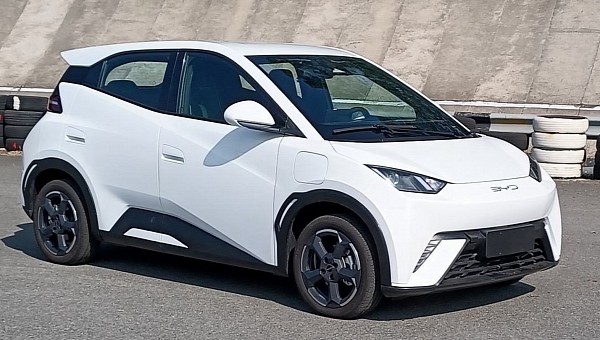Apart from a few exceptions, most of the world’s population is more worried about what to eat the next day than about climate change. For these folks, having a vehicle is a luxury; those able to buy a reliable 20-year-old jalopy are fortunate. This is what most people fail to grasp when they discuss EV adoption. For battery electric vehicles to work, they have to be affordable without looking cheap. BYD may have hit a home run with the Seagull, and MIIT documents finally show what this incredible little car looks like.
We have already talked about BYD’s entry-level EV based on the e-platform 3.0. It should have an LFP battery pack with Blade Batteries, 800V, V2L capability, and several other impressive characteristics of previous EVs based on the same architecture. Sadly, the Chinese Ministry of Industry and Information Technology (MIIT) files did not reveal that. Still, it was generous about several other things we were willing to learn about the new affordable EV.
The Seagull is much larger than we expected. At 3.78 meters (148.8 inches), it has the same length as a first-generation Mercedes-Benz A-Class. For an American reference, it is larger than the Chevrolet Spark and its 3.64 m (143.1 in) in length. The Mini Electric Hardtop is slightly larger than the new BYD: 3.85 m (151.4 in), even if they share the same wheelbase: 2.50 m (98.4 in). The Seagull is also 1.72 m (67.7 in) wide and 1.54 m (60.6 in) tall.
When it comes to power, you can’t expect a vehicle that should cost between RMB60,000 ($8,862 at the current exchange rate) and RMB100,000 ($14,770) to be a sports car. The Seagull is pretty far from that: its TZ180XSH motor delivers 55 kW (74 hp). The typical EV torque will probably make it pleasant to drive, even if weight should also help.
The new BYD will tip the scales between 1,160 kilograms (2,557 pounds) and 1,240 kg (2,734 lb). That difference must only have to do with equipment and trim peculiarities. The battery pack should offer only 30.7 kWh, which was the smallest option the BYD Dolphin used to have. With its smaller brother around, the B-segment hatchback will stick to the larger 44.9-kWh battery pack. The Dolphin had a 301-kilometer (187-mile) range under the China light-duty vehicle test cycle (CLTC), which is similar to WLTP. The lighter Seagull should present better range numbers.
Whenever any vehicle lands on MIIT, the automakers responsible for them take only a few weeks to make their official premieres. Expect the Seagull to hit BYD dealerships in China pretty soon. All countries where the Chinese brand already sells its cars expect to get the new entry-level EV in 2023 – if BYD manages to manufacture enough units to feed China and all the rest.
The Seagull is much larger than we expected. At 3.78 meters (148.8 inches), it has the same length as a first-generation Mercedes-Benz A-Class. For an American reference, it is larger than the Chevrolet Spark and its 3.64 m (143.1 in) in length. The Mini Electric Hardtop is slightly larger than the new BYD: 3.85 m (151.4 in), even if they share the same wheelbase: 2.50 m (98.4 in). The Seagull is also 1.72 m (67.7 in) wide and 1.54 m (60.6 in) tall.
When it comes to power, you can’t expect a vehicle that should cost between RMB60,000 ($8,862 at the current exchange rate) and RMB100,000 ($14,770) to be a sports car. The Seagull is pretty far from that: its TZ180XSH motor delivers 55 kW (74 hp). The typical EV torque will probably make it pleasant to drive, even if weight should also help.
The new BYD will tip the scales between 1,160 kilograms (2,557 pounds) and 1,240 kg (2,734 lb). That difference must only have to do with equipment and trim peculiarities. The battery pack should offer only 30.7 kWh, which was the smallest option the BYD Dolphin used to have. With its smaller brother around, the B-segment hatchback will stick to the larger 44.9-kWh battery pack. The Dolphin had a 301-kilometer (187-mile) range under the China light-duty vehicle test cycle (CLTC), which is similar to WLTP. The lighter Seagull should present better range numbers.
Whenever any vehicle lands on MIIT, the automakers responsible for them take only a few weeks to make their official premieres. Expect the Seagull to hit BYD dealerships in China pretty soon. All countries where the Chinese brand already sells its cars expect to get the new entry-level EV in 2023 – if BYD manages to manufacture enough units to feed China and all the rest.







